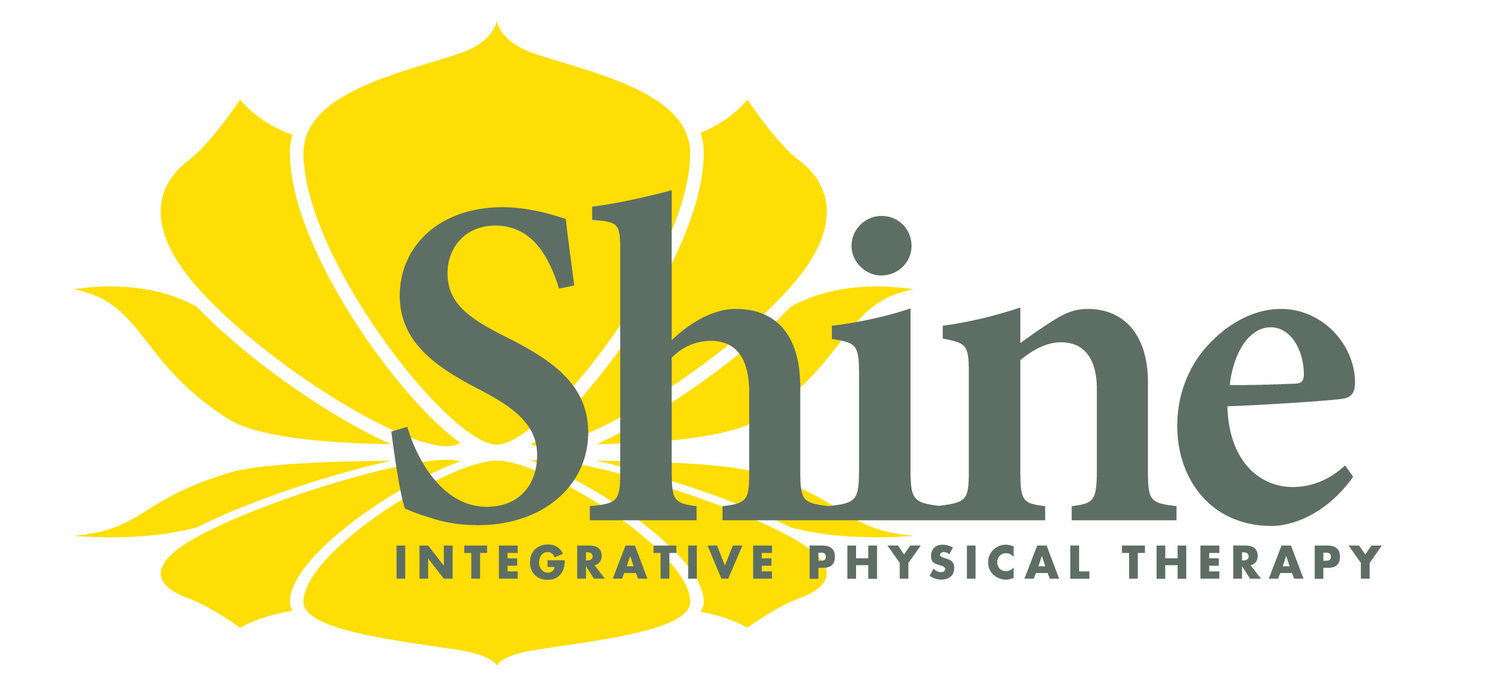Running Mindfully spotlight
/Running Mindfully's Featured Profile: Nagging Or Recurring Injuries? Visit Shine Physical Therapy To "Re-Align Your Tires" With The Postural Restoration Institute (PRI) Approach
Have you experienced a running- or walking-related injury despite diligent attention to your form and a conservative approach to your training? As you've cultivated your body awareness through Chi Running® or Chi Walking®, have you noticed postural anomalies that frequently crop up when your attention wanders?
Consider seeking treatment at Shine Physical Therapy inNW Portland. The therapists at Shine incorporate the Postural Restoration Institute (PRI) approach. After assessing initial alignment, strength, flexibility, and range of motion, they prescribe targeted exercises and administer hands-on treatment to improve alignment, restore balanced movement, and eliminate pain.
As explained in an overview of Shine's PRI-based treatment philosophy, "Just as you would expect your car mechanic to address an alignment issue that was wearing down your tires, rather than repeatedly replace the tires, we seek out and treat the root cause of your symptoms first. We work to improve your alignment right away to empower your body to heal as best it can. In this way, you will experience lasting results and not wear out your 'tires' - your muscles and joints."
For the past year or so, I have taught yoga classes and hosted some of my Chi Running and Chi Walking workshops at Shine Yoga. I became a patient at the adjoining Shine Physical Therapy in August, after experiencing intermittent calf pain and tightness for several weeks.
I've often told my Chi Running and Chi Walking clients that practicing the techniques will help reduce their likelihood of injury. When aches and pains do arise, they will develop the ability to discern whether they can resolve the issue independently by working Chi Running and/or Chi Walking focuses, or whether it would be wise to seek professional advice from an orthopedist, physical therapist, massage therapist, chiropractor, or acupuncturist. In this instance, I knew it was time for me to get professional help in reversing some long-standing postural habits.
Thanks to the body awareness I've cultivated through Chi Running and Chi Walking, for the past few years I have been aware of my long-standing postural habit of lapsing into an anterior pelvic tilt. If I'm not attentive, my lower back muscles like to turn on and my lower abdominals like to switch off, exaggerating my lumbar curve and spilling the front of my pelvis forward. When this happens, my weight shifts into my forefeet, and my calf muscles tense up. Another idiosyncrasy that crops up frequently: my weight often shifts primarily to my left foot, causing my right knee to bend slightly and the right half of my pelvis to rotate slightly forward. My left foot ends up in a mildly everted, or over-pronated, position, yet my right foot tends towards inversion/supination. I've been aware of these tendencies and of the strain they can put on my lower legs and feet, but I couldn't seem to overcome them on my own.
In my initial visits, the physical therapy team at Shine adeptly recognized my above-mentioned postural anomalies - plus a few more. They prescribed a series of home exercises, refining them with each visit as my strength, flexibility, and range of motion improved. Now that my treatment program is nearly complete, my "default" posture is more balanced and symmetrical. The combination of home exercises and treatment sessions has also heightened my body awareness and muscle control, giving me more tools to adjust my alignment when it needs it, whether I'm running, walking, standing, or sitting.
Best of all, my calf pain and tightness largely resolved within the first couple of weeks of treatment. I was quickly able to ease back in to my typical running routine. I even stepped up my training in order to join some friends in the Columbia Gorge Half Marathon in late October. I enjoyed the race, was pleased with my result, and my calves kept very quiet before, during, and after the race.
Emily Soiney, PT, DPT, CST, RYT owns Shine Physical Therapy and Shine Yoga. Her first exposure to PRI was as a patient, while she was a doctoral student at the University of Minnesota. Ever since a collegiate cycling injury and subsequent knee surgery, she had suffered chronic right knee pain that left her unable to run or bike. Traditional physical therapy approaches only seemed to exacerbate her symptoms. Finally, she consulted a physical therapist who had done a clinical rotation at the Hruska Clinic in Nebraska, where Ron Hruska originated PRI. Soiney recalls, "As soon as she taught me my first PRI exercise, I was hooked! The knee pain that so many sports medicine physicians told me was from weak quads actually resolved almost immediately from the PRI treatments that strengthened my left hamstrings and inner thigh muscles." She adds, "The PRI approach appealed to me not only because it worked so well after years of pain, but also because it was exactly what I saw was missing from PT approaches in general - a genuinely holistic assessment of the whole person."
The PRI approach emphasizes recognizing assymetries in the body. "This emphasis really resonates with our patients who - after one or more injuries - just don't feel balanced in their bodies," Soiney notes. She adds, "When the normal balance of bodily systems is thrown off from injury, less-than-ideal posture, or even poor breathing, it can cause strong patterns to emerge. Unless these patterns are treated as a whole - such as by working with chains of muscles to restore balance - many people don't find lasting relief from traditional therapies."
PRI techniques can benefit anyone, and the physical therapy team at Shine treats patients of all ages and abilities. However, Soiney believes the approach can be of particular benefit to athletes, who tend to be active, motivated, and in touch with their bodies. The PRI approach may especially resonate with those who practice Chi Running or Chi Walking. Like Chi Running and Chi Walking, PRI assessment and treatment integrate posture, breathing, and balanced muscle activity. Soiney, who attended one of my Chi Running workshops a couple of years ago, notes, "Anyone who has attended a Chi Running or Chi Walking course will immediately recognize many similar concepts that PRI also teaches, such as inhibiting/relaxing the calves and lower back while utilizing the abdominals and hamstrings."
A typical course of PRI treatment begins with repositioning the pelvis and ribcage to a neutral state through home exercises and perhaps hands-on treatment. Next, focus shifts to retraining tight, overactive muscles to encourage them to let go, while learning to activate weaker muscles. Soiney explains, "We progress our clients by integrating all of these muscles into functional movements while ensuring that diaphragmatic breathing is maintained. Soon, our clients are ready to return to their active lifestyle." "Runners and walkers of all types are welcome, especially those with back injuries, leg injuries, breathing issues, neck strain, or stress incontinence," Soiney concludes.
By Alice Diffely, RYT,Certified Chi Running® & Chi Walking® Instructor

